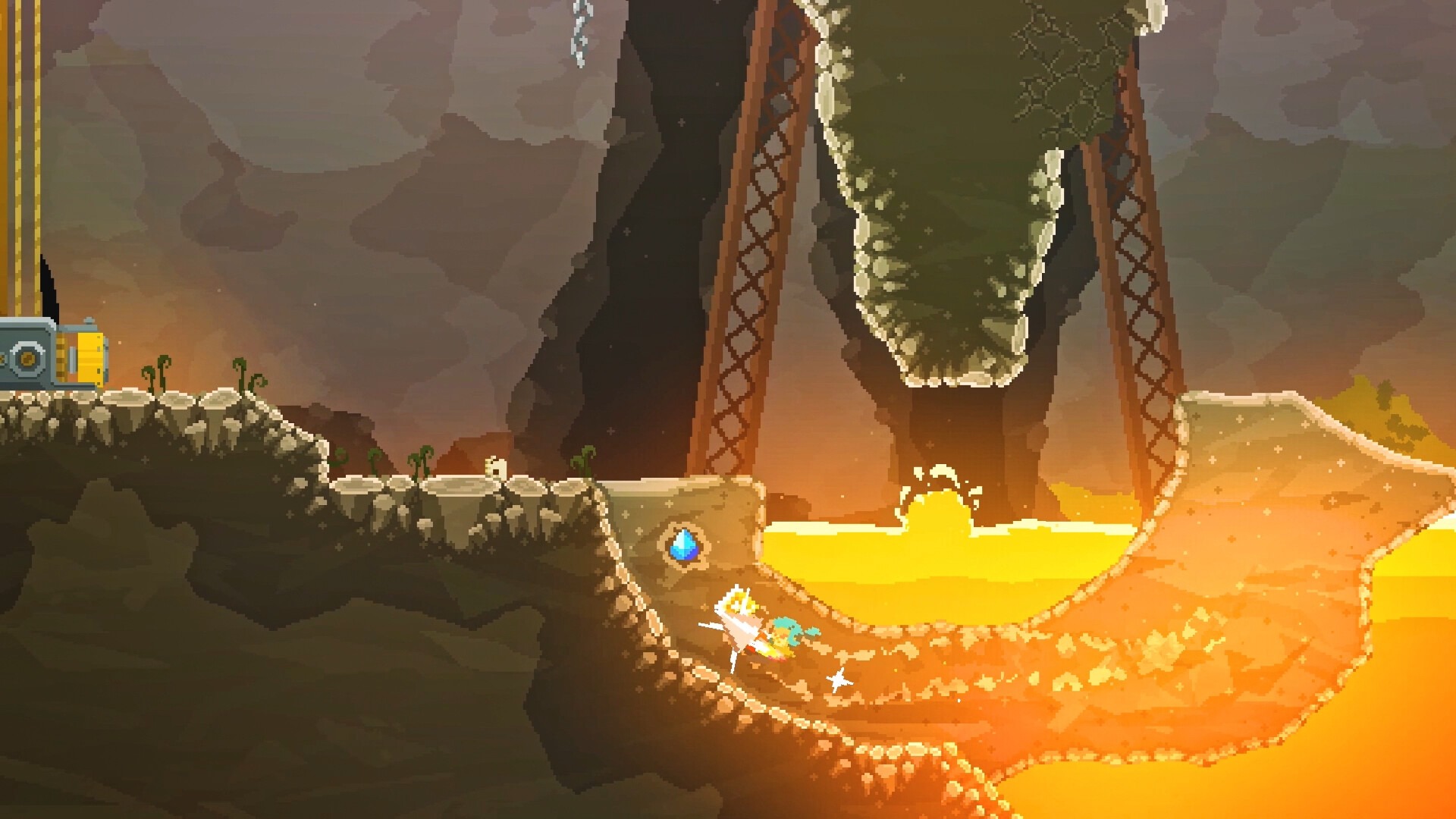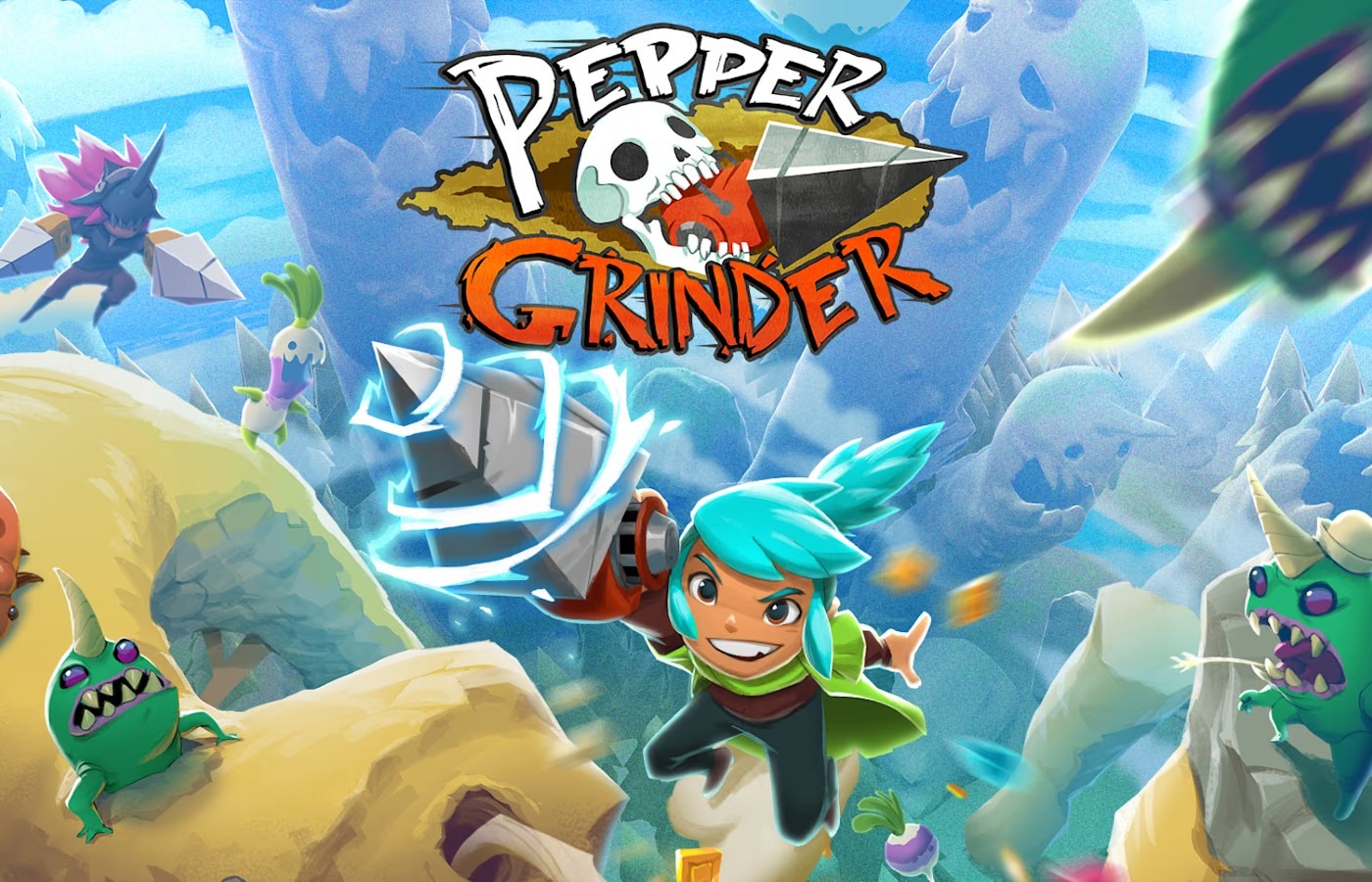Sometimes, it only takes one convincing mechanic to get started with a great game, and Pepper Grinder is an excellent example of that. The holder grinder is as powerful as it is versatile, it can pierce the floor and drive all kinds of crazy devices. The difficulty curve can be uneven and it finishes faster than it should, but this basic mechanic forms a stable base that has kept me entertained from start to finish.
Of course, this basic mechanic is the Grinder, a conical drilling platform that the protagonist Pepper uses to dig into the terrain, turn switches and defeat enemies. The level design is clever throughout and I’m not going to spoil anything, but I was impressed by the amount of uses the team found for a device that could age quickly. That said, while it’s fun to jump in and out of spots, balance on grappling hooks, and get over gaps, it’s not as easy as it sounds.

Don’t be fooled by the pixel art and the cheerful exterior of Pepper mill – this game can get tricky, especially with its platform challenges. Some jumps need to be strengthened at the right time, and if he is not ready for a certain grip point to appear, he will rush to die. The most difficult levels are the Pepper Grinder boss stages, exciting actions that use the game mechanics creatively. Since the bosses have big health bars, these are endurance tests, but they still manage to keep the fast pace of the game. The arenas and the bosses themselves also look fantastic, showing the developer Ahr Ech’s talent for pixel art at the highest level.
While I enjoy being challenged, the difficulty sometimes frustrates me because of its inconsistency, with one level finishing me repeatedly and the next flying by without hurting me once. Dying against a tough boss was never a problem, because its difficulty is well predicted and adequate, but some levels have difficult jump sequences or waves of enemies right in front of a checkpoint, which annoyed me if I had to try again and again. While there are a few reasons why this may happen, it is at least partly a symptom of the length of the game; if you include fewer levels, it becomes more difficult to smooth out the difficulty curve, which leads to such peaks.

I’ve alluded to this several times, but pepper grinder is a surprisingly short experience. It took me only three and a half hours to finish the main story, and then another half an hour to go back and collect enough coins to play the locked levels that I skipped. I have nothing against short games, but the continuous credits surprised me. There are a lot of ideas and mechanics that could have been easily expanded, and by expanding the first part of the game, the difficulty spikes towards the end probably wouldn’t be so frustrating.
I mean, I appreciate their efficiency. Ahr Ech had an idea for a platforming mechanic and repeated it enough to complete a story; there’s not a moment lost in the whole game, and that’s more than many games can say. Pepper grinder is a well cooked meal, I just wish the portion was bigger.

And there are ways to devote more time to the game after the victory over the final boss. In addition to a time strike mode, full players will enjoy five collectible skull coins in each level, although they are also worth collecting for casual players. At 10, you can access a locked level in any world, and they are some of the most entertaining levels in the whole game, sometimes even introducing completely new mechanics. Skull coins can also be used to unlock hair and clothing colors, but I wish they were separate; it feels strange to choose between playing more and changing my hair color. I recommend prioritizing level unlocks, but I won’t blame you for jumping through the pink hair.
Pepper Grinder is an innovative standalone experience full of exciting actions, a smooth platform and an eye-catching visual design. While its short running time made me crave more, I’m happy with what it is: a brilliant action platformer that’s anything but a grind.




